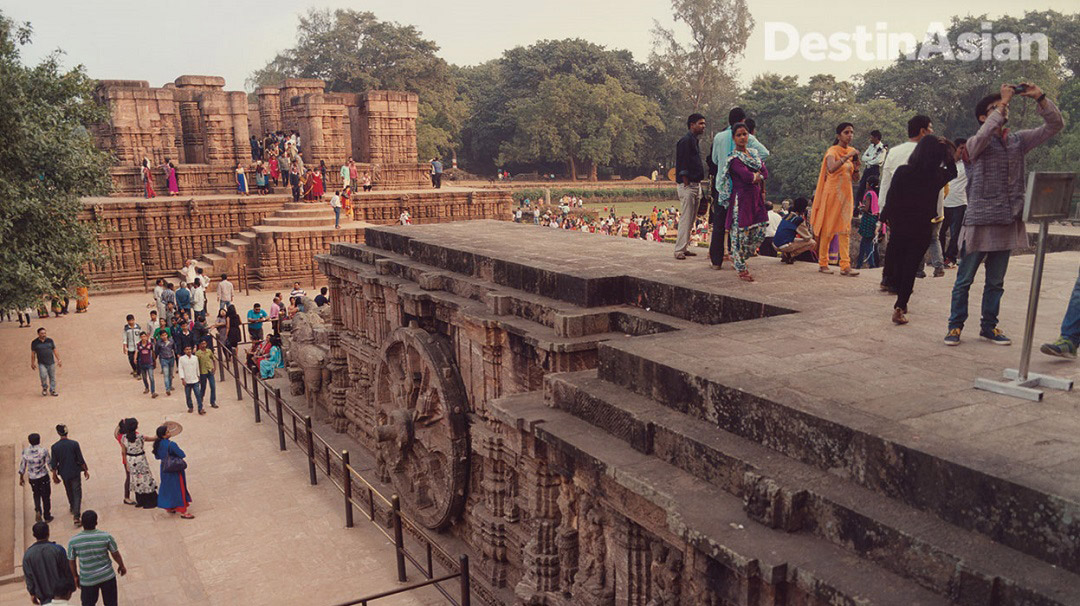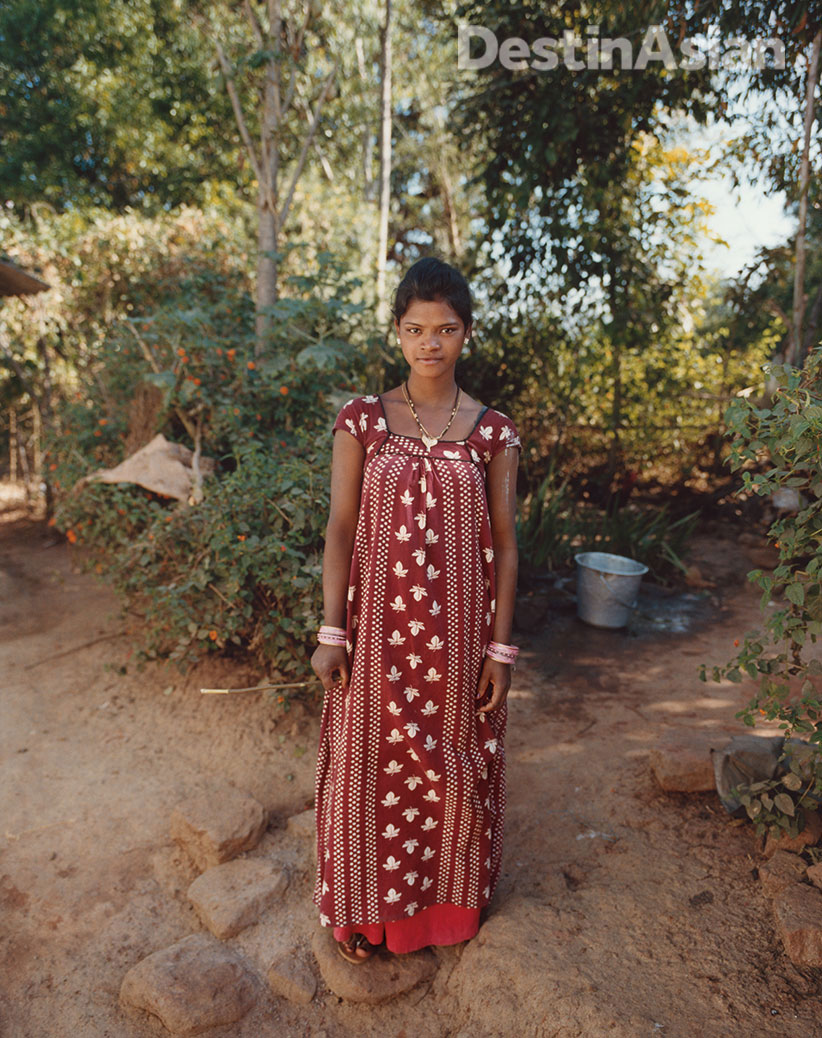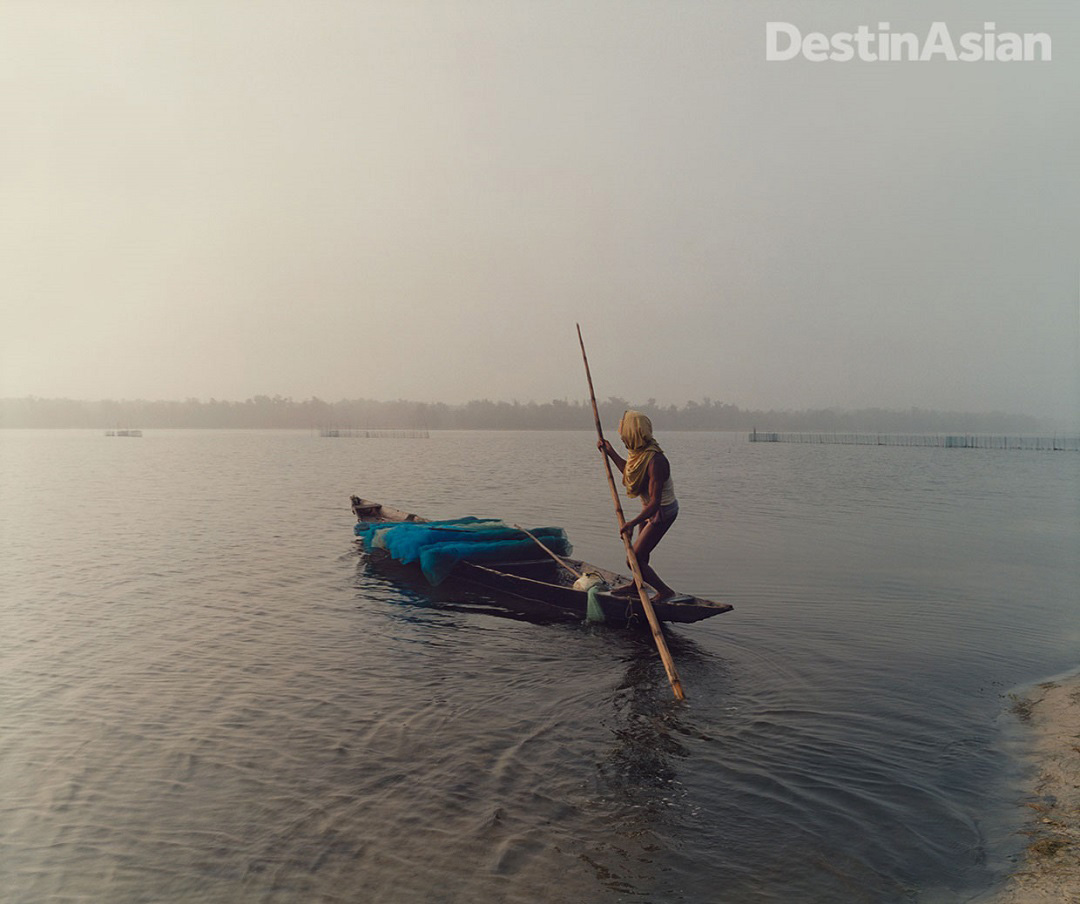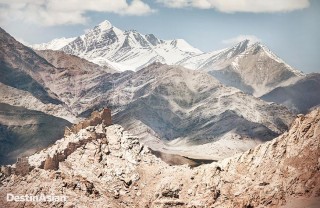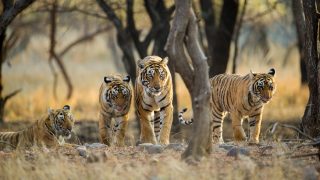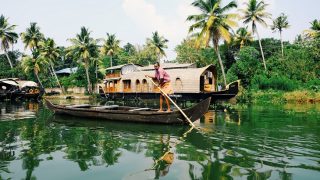Beyond the crowd-pleasing temples that draw pilgrims to India’s ninth-largest state, a patchwork of tribal peoples and tranquil beach escapes await.
The knives are the first thing I notice. Sharp, luminous, and etched with swirling designs, these miniature brass daggers adorn the hair of the approaching women who have just arrived barefoot from the mountains. Each one carries a live chicken beneath the hand-woven scarves wrapped around their breasts, the bird’s bright red combs poking out above the fabric.
I’m in the jungle-clad highlands of the eastern Indian state of Odisha—formerly known as Orissa—with my husband and two children. The women we’ve just encountered are members of the Dongria Kondh, a forest-dwelling tribe who have come to trade at the village market here in Chatikona.
I’ve traveled extensively in India, but it’s the frontier states and less-trumpeted regions that draw me back. Though Odisha welcomes millions of domestic tourists a year, its popularity hasn’t caught on overseas, with less than one percent of foreign visitors coming to the state. It’s their loss. Odisha has 485 kilometers of coastline; wild tigers and elephants; royal palaces; and Konark’s UNESCO-listed Sun Temple, shaped like a giant stone chariot. There’s also a lot of cultural diversity within its borders. Nine and a half million Odishans—roughly a quarter of the state population—belong to 62 tribal communities.
The Dongria are only about 8,000 strong, yet they are the ones who have garnered international attention thanks to a legal battle with mining giant Vedanta Resources. Odisha may look undeveloped to outsiders, but that’s because much of its wealth lies below the surface. India’s largest deposits of iron ore and bauxite are found here, among them the porous bauxite cap of the Niyamgiri, valued at two billion U.S. dollars.
To the Dongria though, these hills are priceless. The Niyamgiri is their home, containing their villages, livelihoods, and the sacred “mountain of law”—the abode of their primary deity, Niyam Raja. Felling trees has long been taboo in these parts, and the dense forests shelter leopards, sloth bears, and other endangered species. The porous rock and thick vegetation of the Niyamgiri also act as a natural reservoir for the monsoon rains, providing clean water throughout the year, not just for the Dongria, but for many others who live downstream.
Miraculously, after a decade-long battle, the Dongria won a Supreme Court order in 2014 to prevent Vedanta Resources from extracting the minerals inside their sacred mountain. Their victory was music to my ears and I had long wanted to visit this tribal community. Still, it’s ironic that bauxite—the primary source of aluminum—is how we arrive here, because it’s used for aircraft and car engines as well as mobile phones.
We watch the Dongria bringing large sal leaves, stitched together to make natural plates, and jackfruits to sell in exchange for salt and dried fish. Skilled horticulturists, they also grow tobacco and turmeric in their fields. Government regulations mean that the remote Dongria villages are off-limits to travelers, so it’s only here that we can meet them.
Another related group, the Kutia Kondh, live nearby, and many of their women have intricate facial tattoos. But our guide, Shreesh, explains how the tradition is fading. “The younger generation is no longer doing this due to government pressure.”
We navigate small tracks that wind past paddy fields and lead to hamlets of mud houses with porches. Outside one village, I spy a large wooden structure with horns and ask what it’s for. “Human sacrifice, previously, until the British stopped this practice in the 19th century,” Shreesh replies. “Now, it’s buffalo.”
He continues to tell us how, during the annual Meriah festival, the animal is tied up beneath it before hundreds of knife-wielding men attack in a frenzy. “It’s fierce and furious,” he says. “Nothing but a few bones remain.” The blood is then poured onto the ground for the earth goddess: ensuring bumper crops, happy ancestors, and an excuse for two days of dancing.
Animal sacrifices aside, we stumble upon a folk dance during our stay at the Chandoori Sai guesthouse in the Koraput district, a four-hour drive to the south. A child has been born, so the Paraja—the local tribe—celebrate by performing the Dhemsa ceremony. Women with flowers in their hair create a human chain and twist, snake-like, to drumming and the mahuri, a wind instrument whose notes resemble the haunting sound of snake charmers.
We don’t even have to leave the confines of Chandoori Sai to meet more intriguing characters. Tribal women from the nearby village of Goudaguda work here and I delight in watching them swirl around the walled garden in citrus-colored saris, listening to the bells tinkle at their ankles as they hang up laundry.
Goudaguda is also home to a caste of potters, the Kumhar. Early each Sunday evening the lanes are strewn with pots of all sizes drying in the sun, ready to be carried to the Monday market in neighboring Kakiriguma. We witness the pots being piled up, covered with straw, and sealed with dollops of mud to create towering homemade kilns. Once fires are lit inside, the pots are left to smolder through the night. The entire process is a real spectacle.
Yet it’s Puri that Odisha is best known for. We reach the seaside city on an overnight train, waking from our bunks to fields of cotton outside the windows. The main draw here is Ratha Yatra, a spectacular procession in June when the Hindu god Jagannath and his brother and sister are placed in giant chariots and dragged through the crowds by thousands of devotees.
Puri’s Jagannath Temple is one of four char dham pilgrimage sites which every good Hindu hopes to visit in their lifetime. Since non-Hindus cannot enter the 12th-century compound, we climb to the roof of the Raghunandan Library directly opposite and observe the mass of people below. After dark, the beach seems almost as crowded. Zac, our eldest, joins other children as they throw glowing fluorescent balls into the waves, running to catch them as they roll back with the surf, while dodging garlanded camels and balloon vendors along the water’s edge. Around us, lurid candy floss hangs from sticks and smoke billows from food stalls; candle-lit puja ceremonies and tinseled merry-go-rounds add even more light and color to the scene.
But coastal Odisha has its quiet side. Driving west from Puri, long stretches of empty sand lead down to Chilika Lake, a large brackish lagoon dotted with numerous islands. On one, Berhampur, we spend the next few days at a campsite, enjoying the solitude, the sight of fishermen gliding past in their dugout canoes, and freshly caught prawns from the lagoon. The journey here by boat is sublime, passing immense flocks of migratory birds and endangered Irrawaddy dolphins that leap up around us.
Gopalpur-on-Sea, a tranquil town farther down the coast, is our final stop. Its lighthouse—striped red and white like rock candy—presides over miles of sand fronting the Bay of Bengal. We bed down in the newly restored Mayfair Palm Beach Resort, where the ocean-view rooms are spacious and the pool has cabanas right in the water. But what I love most is the complimentary afternoon tea of chai, biscuits, and street food such as gup chup and papdi chaat, served from a thatch-roofed beach hut. We nibble at these morsels while sitting on brightly colored wooden chairs, watching the surf and Nulia (fishermen caste) lifeguards in their red-and-yellow uniforms.
Looking up the beach toward the lighthouse, my mind wanders back to the Dongria women and other tribes we encountered earlier on the trip. I fervently hope that their deep-rooted traditions continue to thrive in Odisha. After spending the last two weeks being taken around this diverse, magnificent, but under-appreciated Indian state, I’ve become ever more convinced of its beauty.
THE DETAILS
Getting There
On April 26, AirAsia (airasia.com) will launch direct flights from Kuala Lumpur to Bhubaneswar, Odisha’s state capital. Domestic carriers fly there from Mumbai and Delhi.
Where to Stay
Chandoori Sai (91/9443-342-241; doubles from US$92) in the district of Koraput, The Hans Coco Palms, Puri (91-80/4809-1108; doubles from US$91), and Gopalpur-on-Sea’s Mayfair Palm Beach Resort (91-680/666-0101; doubles from US$125). All travel and lodgings can be arranged through Puri-based Grass Routes (91/9437-029-698), a small outfit run by Odishan Pulak Mohanty and his Australian wife Claire Prest.
This article originally appeared in the April/May 2017 print issue of DestinAsian magazine (“Odishan Odyssey”).

